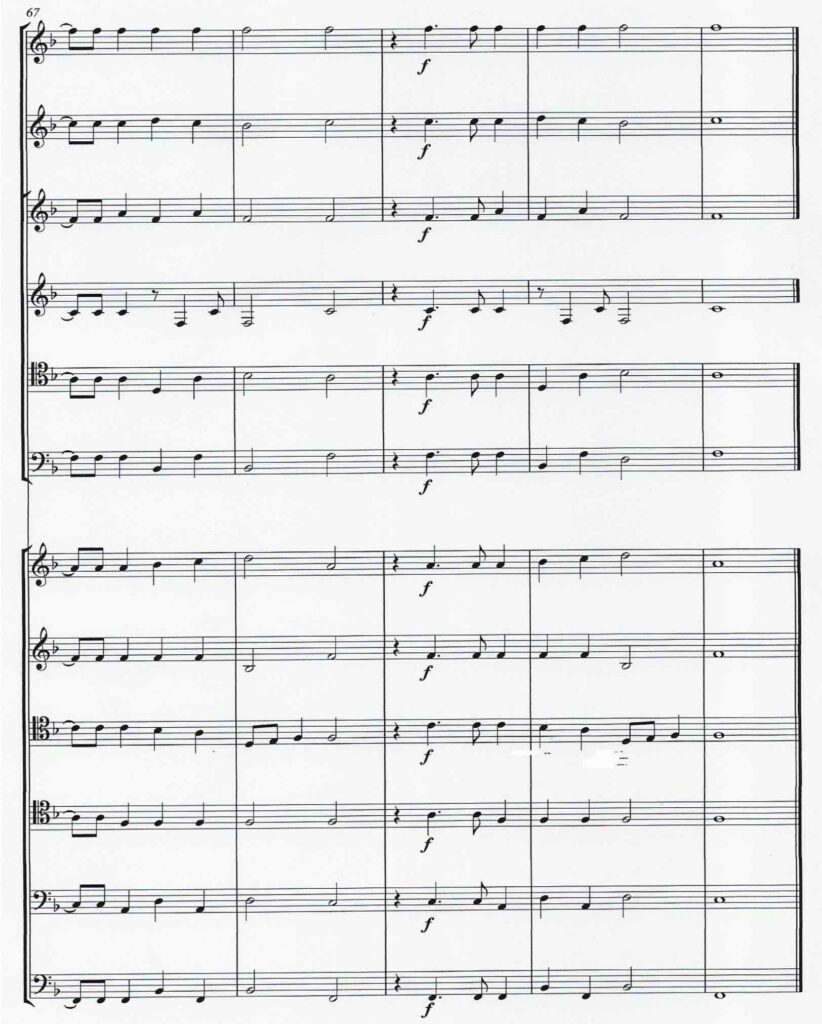Jacobus Gallus (1550-1591) Cantate Domino


Jacobus Gallus, in Slowenien geboren und in Prag gestorben, war ein Slowenischer Komponist, der in Österreich, Mähren und Böhmen seinen Wohnsitz hatte. Er war einer der geschicktesten Kontrapunktisten seiner Zeit und ein bemerkenswerter Komponist mehrchöriger Werke, dessen Musik eine Verschmelzung der Stile und Techniken seiner Zeit darstellt. Galllus „Cantate Domino“ aus Opus Muscicum (Motettenwerk für das ganz Kirchenjahr) ist in den Denkmälern der Österreichischen Tonkunst Band 12, XXXV erschienen. Der Komponist hat den Psalm 149 für duodecim vocum, duobus choris gesetzt. Der Text lautet „Cantate Domino canticum novum, laus eius in ecclesia sanctorum.“ („Singt dem Herrn ein neues Lied, sein Lob in der Kirche der Heiligen“). Der erste Chor ist besetzt mit Cantus I,II, Altus I,II, Tenor und Bassus, der zweite mit Cantus, Altus, Tenor I,II, Bassus I,II. Prof. Hackl hat das doppelchörige fulminante Werk für 5 Trompeten in Bb, 2 Hörner in F, 4 Posaunen und Tuba arrangiert, wobei die Länge der Motette und die Tonart gleich geblieben sind. Den ersten Chor könnte man Holzbläsern (Oboen, Klarinetten, Fagotte) zuteilen, während der zweite mit Blechbläsern besetzt werden kann. Auch wäre es reizvoll, den ersten Chor mit konischen (Flügelhörner, Hörner, Tenorhörner, Tuba) , den zweiten mit zylidrischen Instrumenten (Trompeten, Posaunen) zu besetzen.

Jacobus Gallus, born in Slovenia and died in Prague, was a Slovenian composer who resided in Austria, Moravia and Bohemia. He was one of the most skilled contrapuntists of his day and a notable composer of polychoral works whose music presents a fusion of the styles and techniques of his time. Gallus “Cantate Domino” from Opus Muscicum (motet work for the whole church year) has been published in the monuments of Austrian music volume 12, XXXV. The composer set the Psalm 149 for duodecim vocum, duobus choris. The text reads “Cantate Domino canticum novum, laus eius in ecclesia sanctorum.” (“Sing to the Lord a new song, his praise in the church of the saints”). The first choir is composed of cantus I,II, altus I,II, tenor and bassus, the second with cantus, altus, tenor I,II, bassus I,II. Prof. Hackl has arranged the brilliant double choir work for 5 trumpets in Bb, 2 horns in F, 4 trombones and tuba, whereby the length of the motet and the key have remained the same. The first choir could be assigned to woodwind (oboes, clarinets, bassoons), while the second can be assigned to brass. It would also be attractive to fill one choir with conical instruments (flugelhorns, horns, tenor horns, tuba) and the other one with cylindrical instruments (trumpets, trombones).
| sound sample / Tonbeispiel | score/parts PDF download: € 39,- | add to cart / in den Warenkorb |
